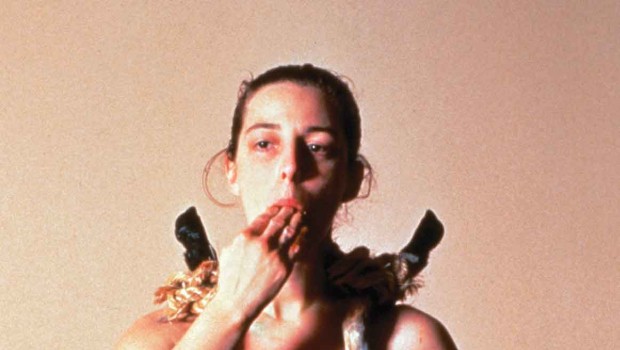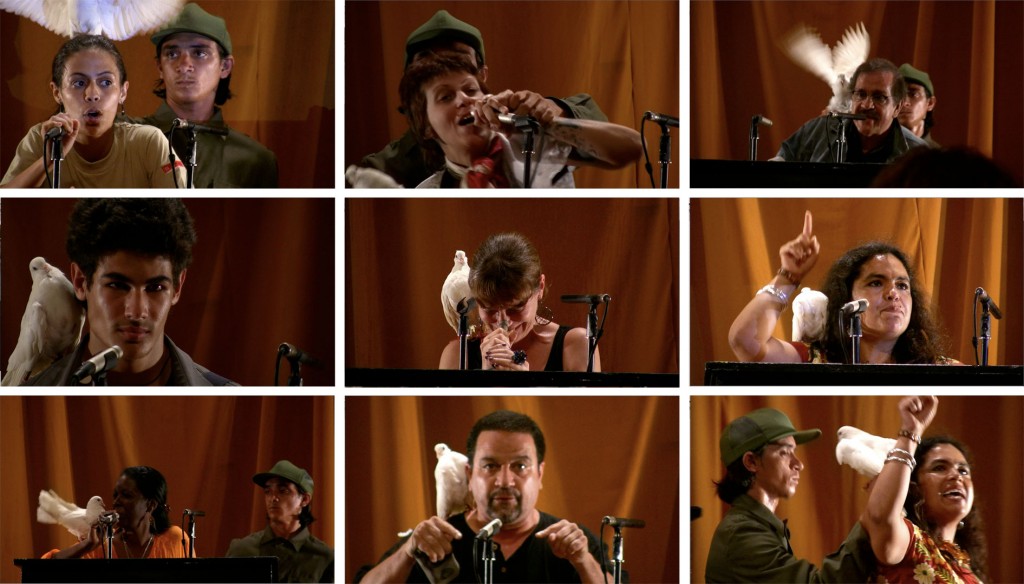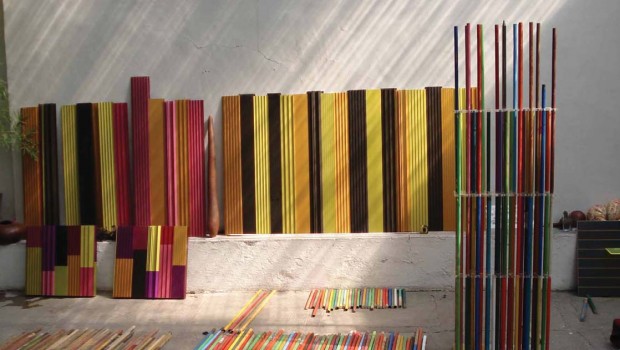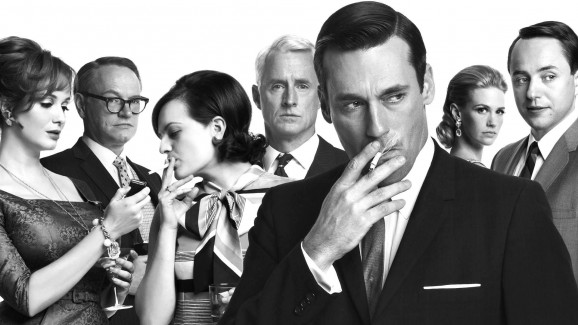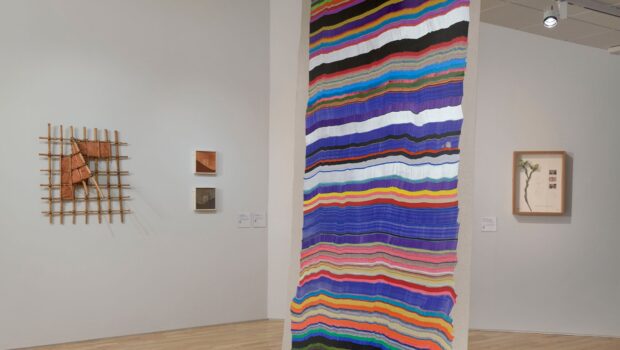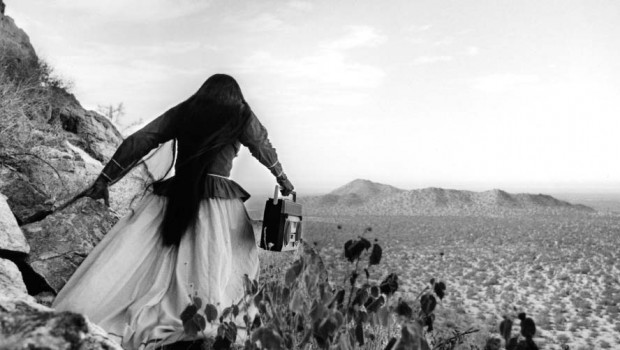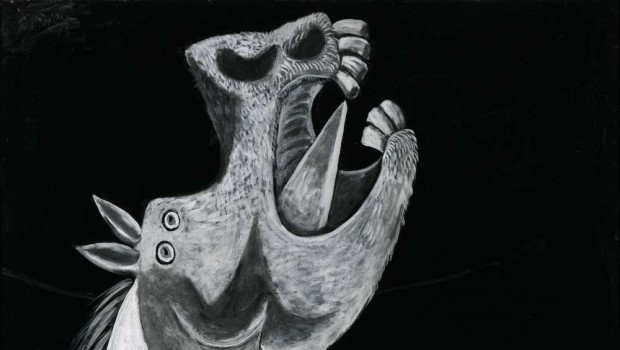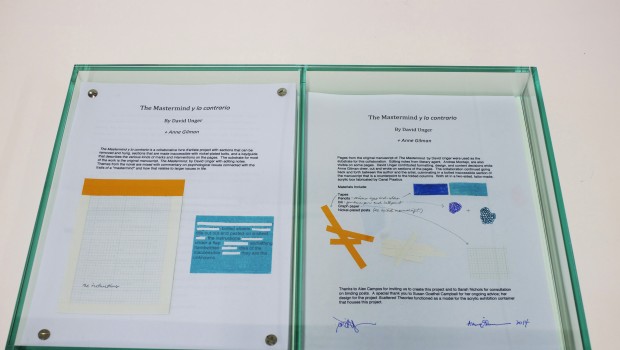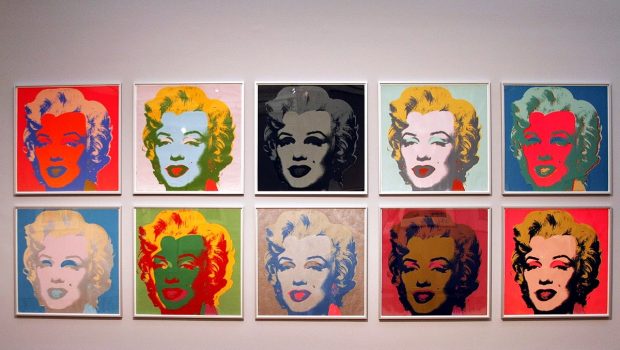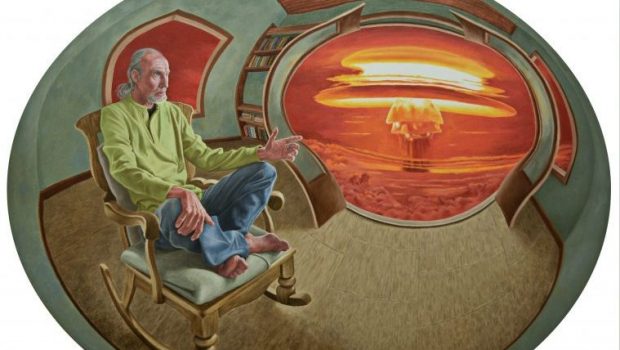Whispers and Silence: Tania Bruguera, Raul Castro and Performance Art in Cuba
Yvon Grenier
Three times recently we were reminded that art can still stir the pot in our blasé 21st century: with the censorship and delayed release of the B movie The Interview, the assassination of Charlie Hebdo editors in Paris, and with the censorship of an audacious performance by Cuban artist Tania Bruguera (1968- ) in Havana. Though the event did not capture as much attention in the global village as the other two, Bruguera became a cause célèbre in the confined milieus of highbrow art and Cuba watchers. Big media took notice: The New York Times ran an editorial entitled “Cuba Turns Off Critics’ Open Mic.” The spotlights were already beaming on the island after the epochal Obama-Castro agreement on December 17. For an artist eager to provoke, the timing was perfect.
Art as Mirror of Politics
The episode began with Bruguera using the social media, under the political hashtag #YoTambienExijo (I Also Demand), to announce her intention to stage a provocative performance December 30th on the most famous political site in the country, Revolution Square (Plaza de la Revolución). She flew to Cuba on December 26th, after years of absence from the island (she lives and works mostly in the US). Tatlin’s Whisper #6 features an open mic and an invitation to anyone in the audience to step forward and speak uncensored for one minute. A dove is placed on each speaker’s shoulder in a transparent parody of a famous speech by Fidel Castro in 1959. Two actors in military uniform escort each speaker back into the crowd. Needless to say, such a performance would “perform” very little in a free country. It is a mirror that reflects the political environment where it takes place.
Bruguera made clear her intention to stage the performance after she was denied permission to do so, with predictable consequences. She was soon repudiated by the state-run art council, and then detained by the police (three times). Up to 50 artists and dissidents were detained as well (or held under house arrest), many of them before they could even reach the square. So Bruguera’s performance never took place. Or did it? “Everything that happened — from the day that we formed the platform, is a performance,” she said. “And it turned out different from what I expected.” The new script involved the censorship of a Cuban artist of considerable international stature by a pseudo-liberalizing communist regime.
Tatlin’s Whisper #6 was presented once before during the Havana’s 2009 Biennial, in a confined cultural space: the Wifredo Lam Center in Old Havana. Back then, blogger Yoani Sánchez used her minute to defend freedom of expression, which mightily annoyed the regime. She, not Bruguera, was accused of staging a “provocation against the Cuban revolution.” Bruguera’s insistence on using an open public place and, perhaps, the 2009 precedent made the difference between now and then. Still, one wonders why the regime opted for censorship and repression, rather than giving her the green light and filling the Plaza with its own supporters. It could have chosen what role to play in Bruguera’s performance and arguably, opted for the worst one.
The Art of Provocation and Manipulation
Bruguera is a visual artist and in Cuba, this is probably the sub-field, within the field of culture, that has enjoyed more “space” for expression since the 1980s. Her status as an internationally known artist undoubtedly gives her some additional privileges. The fact that she lives and travels in and out of the country may or may not give her an advantage, however. The right to travel abroad and to return to the island is still a precious commodity in Cuba. The gatekeeper state uses it to keep writers and artists in check. As a matter of fact, her passport was confiscated while she stands accused of “incitación al desorden público y a delinquir, y de resistencia.” The passport could be immediately returned, she was told, if she promises to leave and never return to Cuba. She refused.
Art can be political in various ways. For many, starting with Plato, great art is by definition critical of established norms, thus it is always political and critical. In a more simplistic way, political art can mean any art that delivers political messages. It looks or sounds like the artist is saying: “Here’s my superior political viewpoint (fill in the blank), don’t you agree?” Some of Bruguera’s work illustrates yet another type of political art, in which politics can be found in the form rather than the content. In other words, in the content of the form. Bruguera describes her work as “political timing-specific art,” her objective being “not representing the political but provoking the political.” She wants to “rethink the role of the art institution in terms of political effectiveness.” In interviews she constantly says that art should be political, ideological, “behavioral” (arte de conducta). “Hago arte político,” she says in a recent interview. “Para mí hay una clara división en el arte, por un lado aquel que es representación porque comenta, y por otro, el arte que trabaja desde lo político porque quiere cambiar algo. Hago un arte que se apropia de las herramientas de la política y trata de generar momentos políticos, un arte a través del cual se habla al poder directamente y con su propio lenguaje.”
In Cuba, everything is political, so it’s not difficult for a Cuban artist to present himself or herself as political. Since the 1980s, Cuban art has been somewhat critical of some aspects of Cuban society, as long as it is destined to the happy few (including foreign clientele) and of course, provided it does not question Fidel/La Revolución directly. The 1980s generation of visual artists was particularly bold by Cuban standards, but they left the country en masse during the late 1980s and early 1990s. Bruguera, who is from the more tame 1990s generation, was “trans-generational,” according to art historian and curator Gerardo Mosquera: “she took the critical political spirit of the previous generation that had left the country and developed it within the new one.”
Political art is usually pretty content with itself, promoting freedom and justice. Bruguera’s art does promote freedom of expression, too, but it concerns power more than freedom. She often makes people do something they wouldn’t have done otherwise, even without their consent. She calls it “unannounced performance,” but in political science, we call that power. Some of her performances seem more like experiments in social psychology, à la Stanley Milgram, than art.
For instance, she describes her work entitled Tatlin’s Whisper #5, performed in 2008 at the famous Tate Modern’s Turbine Hall Bridge in London, as follows: “Two mounted policemen in their uniforms burst into the space while performing mass control techniques with the spectators in the Museum. Among other techniques used, one of the horses corners the audience that divides into two large groups and then are regrouped and compelled to crowd together while the size of circle made by the mounted police decreases making them stay within or without the space since entry is blocked by the horse’s body. Visitors generally answer by complying with the oral instructions of the officers and the imposing physical and historical presence of the horses used as repressive means.” Obviously, the audience is not supposed to know that the mounted polices are actors. She adds: “The names of the piece and of the artist are not announced before the presentation to try to make the experience fresh for the spectators, which is linked to their media memory, rather than their artistic one. The piece activates a police situation exercising the limits of authority and power on civil society and where, through their behavior, the members of the audience turn into citizens.”
In her work “Generic Capitalism” (Chicago, 2009), she “activates” an ideological situation by staging a panel discussion with Weather Underground activists Bernadine Dohrn and Bill Ayers. Bruguera is known for incorporating her own body in her work, but in this case she merely introduces the speakers and takes her place in the audience. “I’m a political artist, so I decided that I was going to give my space to people I admire as political people,” she declared from the back of a crowded Chicago lecture hall. During the Q&A period, combative interlocutors started challenging the speakers from the left. Neither the speakers nor the spectators knew that Bruguera had actually planted those outspoken questioners to steer the discussion in a certain direction. As art critic David Joselit wrote: “What had felt like a spontaneous and explosive conversation had therefore been manipulated, which led to another, unmanipulated, but equally impassioned discussion at the symposium the next day where several participants expressed their feelings of betrayal that the discussion had been fixed.”
In the 2014 version of Tatlin’s Whisper #6, members of the audience were expected to work within some minimal parameters. They could speak for one minute only and follow some rules that this time, they knew of in advance. “No voy a censurar a nadie, pero hay que dar razones, no es un acto de exorcismo personal ni un espacio para expresar odio o demanda de venganza; si tú das tus razones objetivas, tienes que decir por qué, qué te ha motivado a pensar que esa es la solución.” Even if it is “un ejercicio de autocontrol,” as she puts it, it is still she who minimally controls what can be said and for how long. Furthermore, although the manipulation of the audience is minimal, the consequences for speakers are considerable. They can be (and indeed were) harassed, detained, or tagged by the police and other state officials. Would that constitute an illustration of art and politics on a collision course? Or rather, if one chooses the interpretation suggested by Bruguera, a perfect marriage of art and politics, since repression is part of the performance itself? Again, her art does not represent the political: it mimics it, warts and all.
Dissidence or Dissonance?
Gerardo Mosquera writes that Bruguera was the victim of “harsh censorship” but gives only two examples: her performance at the 7th Havana Biennial in 2000 was shut down after one day, as was the underground art and culture newspaper she published in Havana in 1993-1994. But she was not always confrontational. She managed to work in Cuba and abroad, back and forth, for years, which is a tribute to her political adaptability and agility. In 2002 she founded a new program in the school of art (IE), called “Cátedra de Arte de Conducta” (School of Behavior Art Studies), teaching political performances and installation with the goal of producing new socially and politically engaged artists in Cuba. The program was offered until 2010. During the controversy caused by the 2009 version of Tatlin’s Whisper #6, the minister of culture (Abel Prieto) came out to defend her personally. This prompted her to say: “[Prieto] no es un burócrata, no encierra las cosas en viejas trampas y entiende el valor del arte para el discurso político con creatividad. […] La institución entendió que lo que hago viene de un lugar que es el de la crítica revolucionaria y constructiva que aprendí en la escuela, y esto ayudó.” In an interview she also said: “Mi trabajo es empujar los límites de la institución; el de ellos [meaning the bureaucrats], preservarlos, y en esa ‘danza,’ todos sabemos lo que hacemos y que la música se acaba, pero estoy orgullosa de la tolerancia de la institución y de mi exigencia como artista.” It is fairly typical for a Cuban artist to talk about limitations to freedom of expression as a problem within the cultural field rather than as a political problem. That way, bad apples in the bureaucracy get the blame, not the fellow who has almost absolute power at the top. But this time something snapped, unexpectedly (in a recent interview she says: “Nunca pensé que iba a haber una respuesta tan desproporcionada”).
After the incident of last December, Bruguera publicly renounced to her membership to the official artists and writers union, the UNEAC. Until then, she had been a member of this government-run association. She also publicly renounced a cultural award she had received and accepted in 2002: the Distinción por la Cultura Nacional. Her letter to Vice-Minister of Culture Fernando Rojas to this effect is a bit vague, calling for more freedom of expression but without challenging the political leadership directly. Of course it is almost impossible to do that in Cuba, so her words remain fairly courageous. “Los cambios en Cuba no pueden ser reales si una opinión diferente se da cuando el Gobierno lo invita. Los cambios en Cuba no pueden ser reales si lo cubanos tienen miedo a conocer ciertas palabras como por ejemplo Derechos Humanos. Lo cambios en Cuba no pueden ser reales si el cubano tiene miedo a que una opinión lo deje sin trabajo. Los cambios en Cuba no pueden ser reales si lo que le interesa al Gobierno de los cubanos es su dinero y no sus ideas.” These words are not in and of themselves radical; the government routinely invites Cubans to be more critical, even if it doesn’t really mean it. But given the situation, it now appears that Bruguera is no longer a dissonant artist. She is a dissident, and that’s another loss for the regime. Now it has to find a way of handling the incident before the Havana Biennial in the Spring.
Politics as a Mirror of Art
So far, Bruguera has received significant support from the artistic milieu in the form of a petition signed by individuals on the Internet. The US ambassador to the UN, Samantha Power, tweeted that “something pretty remarkable happened” in Cuba with the Bruguera affair. Power mentions the petition and wrongly notes that many Cubans signed it. In fact, last time I checked (mid-January) there were more than two thousand signatures, but only a handful from Cubans residing on the island. (One famous name stands out, Gerardo Mosquera, a man who, like Bruguera, enjoys an international reputation and lives mostly abroad.) To be sure, Internet access is severely limited in Cuba. Furthermore, as she pointed out in an interview with Yoani Sánchez: “en Cuba sabemos que existe una política cultural de muchos años en la cual se trazan ciertos límites invisibles que la gente sabe que no debe traspasar porque habrá consecuencias, también es cierto que en un lugar donde te presionan a definirte, a veces el silencio es el más articulado de los argumentos. Yo he tenido una respuesta muy cálida y de apoyo por parte de muchos artistas y de personas en la calle que ni conozco.”Still, the reaction from peers has been fairly moot. Pinar del Rio painter Pedro Pablo Oliva, who was himself victim of censorship recently, offered his solidarity. There was no petition, like the one signed earlier in December by filmmakers opposed to the censorship of the French film Regreso a Itaca, based on script by Cuban writer Leonardo Padura (Padura didn’t protest against that either). One Cuban artist, Lázaro Saavedra, actually published a letter impugning Bruguera for being an opportunistic self-promoter with no real interest in fighting for (more) freedom of expression in Cuba. This silence of the artistic and cultural community in Cuba can be seen as part of the performance, too, for it shows how fellow artists and writers have much to lose by siding publicly against the government of Raúl Castro. What is more, the Havana Biennial in May-June will greet record numbers of American clients willing to invest in reasonably priced (not for long) Cuban art. Thanks to Mr. Obama, artists will make loads of dollars, solidifying their position as a privileged group in Cuba. One needs to remember that art is not covered by the US embargo since the Berman Amendment of 1988 (though artists and curators still face restrictions, red tape and uncertainty about visas). Artists have been able to sell their works for dollars for almost twenty-five years. While they made money, the state collected taxes and benefitted from the influx of dollars into the economy. For successful artists, living conditions in Cuba are an attractive alternative to either the more competitive world of exile, or the ninguneo of internal exile. The gatekeeper state knows it and plays its cards very well. And yet now and again, an artist, writer or musician dares to challenge the parameters, or simply misjudges them and unwittingly crosses the line (Pedro Pablo Oliva, Danilo Maldonado, Robertico Carcassés). That causes embarrassment for the government and perhaps also for the artistic community, for it brings to light a flagrant situation that few can or dare to discuss openly. Plato was right after all: genuine artists are rebels, whether they choose to be or not.
1) Tatlin’s Whisper #6, version 2009 in Old Havana
2) Tatlin’s Whisper #5, Tate Modern museum, London UK, 2008
3) Generic capitalism, Chicago, 2009
Cover image: Tania Bruguera, El Peso de la Culpa (The Burden of Guilt), 1997
 Yvon Grenier is the author of Guerre et pouvoir au Salvador (Les Presses de l’Université Laval, 1994), Art and Politics: Octavio Paz and the Pursuit of Freedom(Rowman and Littlefield, 2001; Spanish trans. for the Fondo de Cultura Económica in 2004), and Gunshots at the Concert: Literature and Politics in Latin America (with Maarten van Delden, Vanderbilt University Press) among many others. He is a member of the editorial board of Literal.
Yvon Grenier is the author of Guerre et pouvoir au Salvador (Les Presses de l’Université Laval, 1994), Art and Politics: Octavio Paz and the Pursuit of Freedom(Rowman and Littlefield, 2001; Spanish trans. for the Fondo de Cultura Económica in 2004), and Gunshots at the Concert: Literature and Politics in Latin America (with Maarten van Delden, Vanderbilt University Press) among many others. He is a member of the editorial board of Literal.
Posted: February 17, 2015 at 7:13 am


